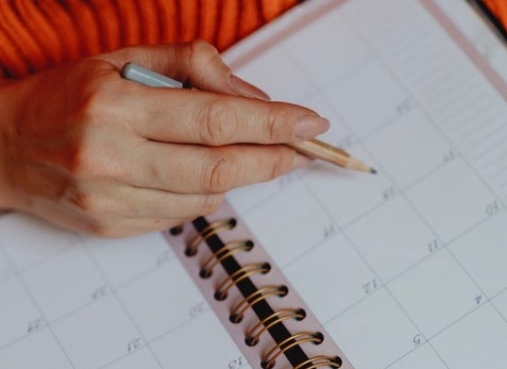It’s important to only pay off what you can afford – you could end up in more debt if you overstretch yourself.
This guide isn’t for people who are struggling with debt. If you’re having serious worries, contact a debt charity like StepChange or National Debtline instead.
Use a budget to plan how much you can pay off
A spending plan sets out how much you expect to earn and spend each month. This means you can see what you’ll have left over to pay off debts with. Having a spending plan is also a good way to understand your spending habits and find ways to cut back.
You may find it useful to create a zero-sum budget. This means assigning a purpose for every pound you earn – whether that’s buying food, paying bills or clearing your debt. That way, you won’t have any ‘extra’ money to spend on unnecessary purchases. Zero-sum budgeting uses the money you earned last month to pay this month’s expenses – this means you can adjust where it goes depending on how much you have to play with.
Finally, don’t forget to set aside a rainy day fund. You may be tempted to use every leftover penny to pay off debt – but you risk getting into more debt if you don’t have a buffer for emergencies.
Pay off your debts in the right order
Paying off your debts in a certain order may help you save money, clear debt faster or keep yourself motivated. But first, it’s important to make sure you can cover:
Priority debts
These are debts where you can get in serious trouble if you don’t pay – such as losing your home, having your electricity cut off or going to prison. This type of debt may include court fines, council tax, child maintenance, utility bills, mortgage and rent. It may also include debt that’s become urgent (e.g. because you missed lots of payments). You can avoid serious problems by paying this type of debt off first.
Minimum payments
When you borrow money from a company, you normally agree to pay a minimum amount every month. Skipping this payment can lead to fines or the company closing your account and taking legal action. So it’s important to meet these payments before clearing other debt.
Once you’ve taken care of priority debts and minimum payments, you can look at ways to prioritize the rest of your debts.
Here are two common methods:
1. Expensive debts first (the ‘avalanche’ method)
Paying off expensive debt first can save you money, meaning you may be able to pay off your debt faster or more easily. You can identify your most expensive debt by looking at the interest rate and fees you’re paying. For example, let’s say you owe £500 on a credit card with a 20% interest rate and £1,000 on a loan with a 5% interest rate. Using the avalanche method you would pay off the credit card first.
2. Small debts first (the ‘snowball’ method)
Some people pay off their debts from the smallest to largest – no matter what these charge in interest and fees. This method isn’t cost efficient, but it can suit people who need quick wins to motivate them. The idea is that you’ll pay off smaller debts quickly, which will give you the stamina to tackle bigger ones.
Try putting your debt in one place
Instead of paying off your debts in a specific order, you can decide to group them into a single account. This is called debt consolidation – it works by paying off your old accounts with credit from a new one.
Putting your debt in one place can make it easier to manage payments and see how much you owe. You may also save money by moving debt to an account with a lower interest rate. Debt consolidation isn’t right for everyone. There are potential drawbacks, such as:
Lower credit score – applying for a new account and closing old ones can damage your credit score
Eligibility – you may not get approved for a consolidation account with a lower rate than your old accounts
Total cost – even if your consolidation account has a lower rate, you may end up paying more interest overall if you clear the debt more slowly
Setup fees – some accounts charge a fee when you first open them, so pick your consolidation account carefully
Early repayment penalties – you may get charged for paying off old accounts before their term is up
More debt – you may be tempted to rack up more debt by reusing your old credit accounts
Common ways to consolidate debt
One way to consolidate debt is with a personal loan. This type of loan is unsecured, which means your home isn’t forfeited if you miss payments. You’ll normally need to repay a fixed amount each month until the loan is cleared.
If you’re only consolidating credit card debt, you might consider a balance transfer card instead. These typically offer a 0% interest rate for a fixed period. Just be aware that there’s often a setup fee. Also, you may end up with a higher interest rate if you don’t clear the debt before the 0% period ends.
Make sure you stay motivated
Debt and a tight budget can get you down, so make sure to look after your mental state as much as your financial one. Try to:
Ask for emotional support – budgeting is easier when your friends and family understand what you’re trying to do
Get inspired – reading stories from people who’ve beaten debt, measuring your progress or joining communities of people who are paying off debt too
Have fun on a budget – look for free events or set yourself money-saving challenges.

